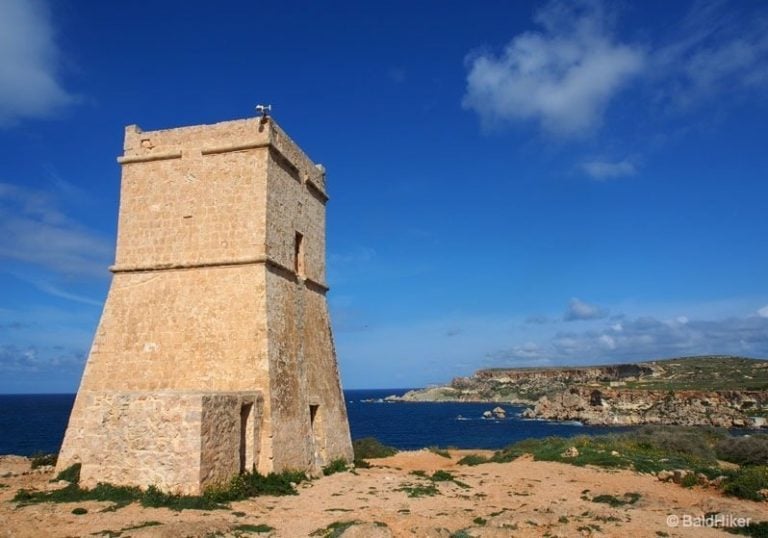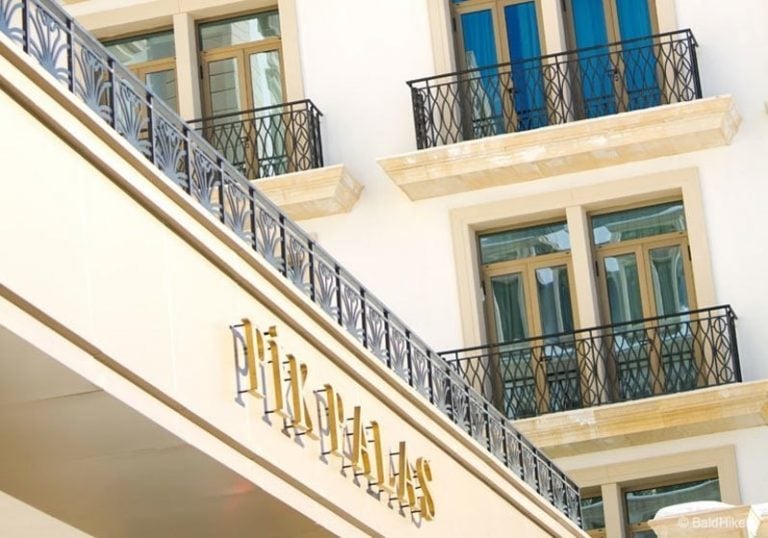Watching the sun set weaving its magic on the 1000-year-old canvas that is the Alhambra is treat, but the serotonin racing around my brain have been triggered not by the view, but the delicious bacalao and piquillo pepper sauce that I have just finished.
I’m considering licking the plate, and although I am sure the kitchen staff would see this act as the ultimate compliment, my wife would not favour this action. Instead, I use the last remaining piece of ‘pan’ to remove every trace of my meal from the crockery.
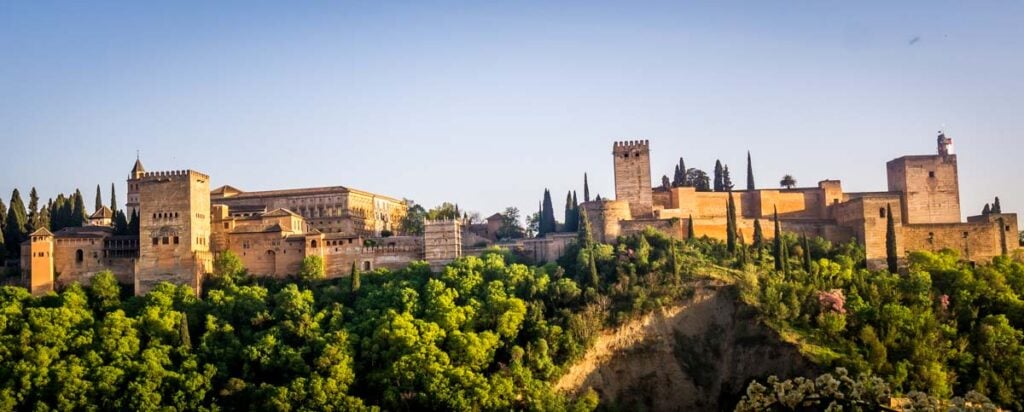
The Alhambra
Granada is a fabulous city to spend a long weekend in. The Alhambra and Generalife gardens are one of Spain’s most visited attractions and the influence of its Arabian and Romanesque can be found in the buildings of the historic quarters surrounding the place.
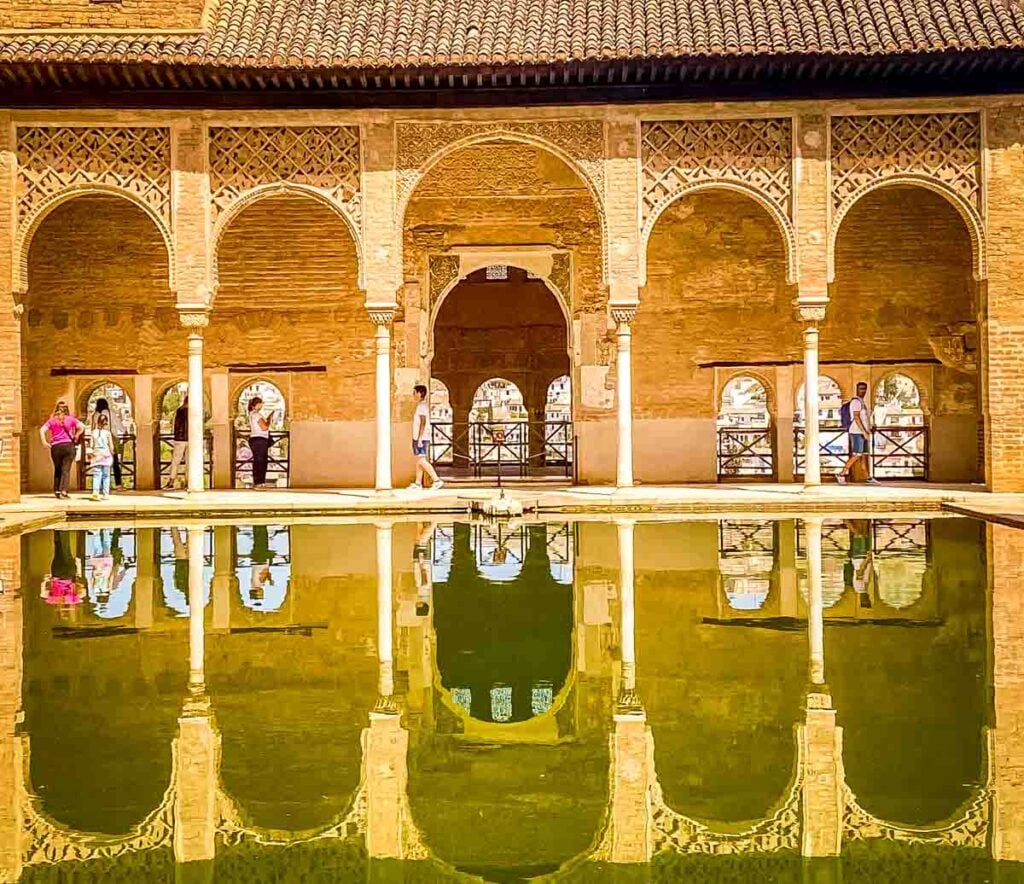
We visited in Spring over the Easter weekend which is a lovely time to visit the city.
The bitter orange trees that are everywhere through the city fill the air with their sweet-smelling blossom and the weather is good and almost definitely better than wherever home is.
Easter – Semana Santa – brings both tourists and locals into the city centre to watch festivals that bring parts of the city to a halt over the Easter weekend.
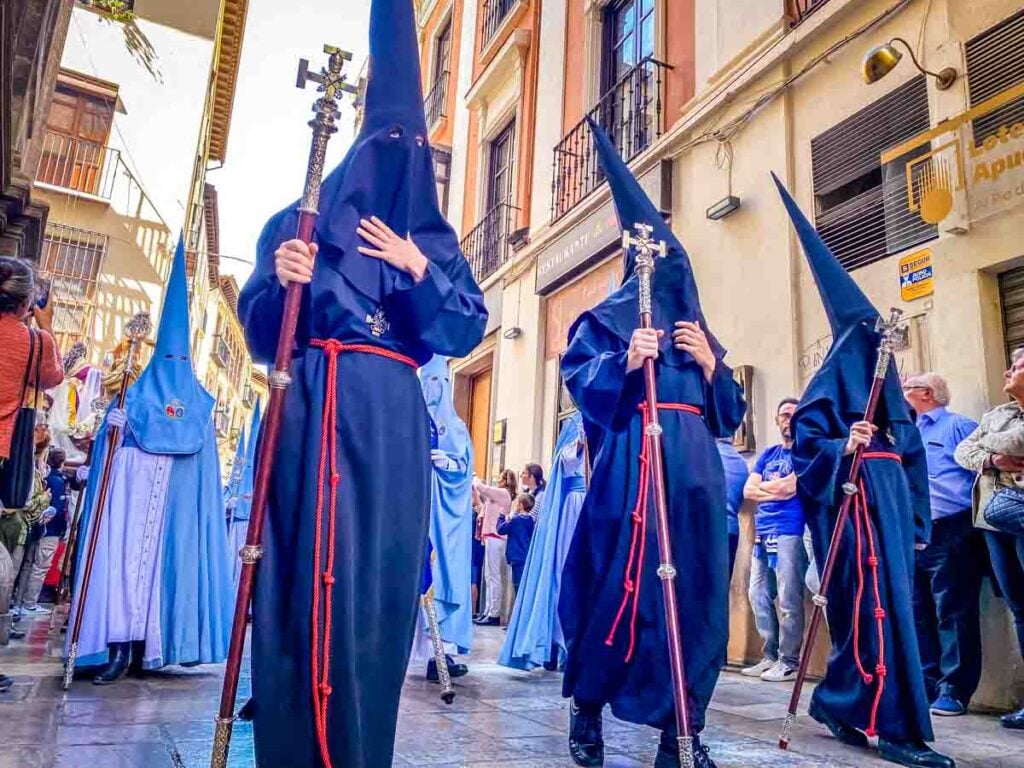
The whole week is a big deal in this part of Spain and the historical centre is packed to watch protagonists dressed up in traditional outfits parading through the streets, carrying floats to the metronomic beat of drums and brass instruments.

That the locals are off is useful for knowing where is good to eat in the city. The queue of Grenadians trailing out of Los Italianos ice cream shop and across the street told me all I needed to know about where my future ice cream purchase was going to take place (I can highly recommend a tub of the pistachio).
What is the difference between tapas, raciones, and pinchos?
I think we are all familiar with tapas by now – small plates of food – but what about its origin? Tapa comes from the Spanish verb ‘tapar’ meaning to cover and legend has it that tapas were served to put on top of glasses to deter fruit flies from doing the backstroke in their wine.
Whilst the source of the tradition is debated, it is more widely accepted that the practice started in Andalusia, and in cities like Granada ‘ir de tapas’ – to go out for tapas – is a way of life. In many of Granada’s bars a free tapa will arrive with every drink that you order.
The dishes are usually modest offerings but may become more slightly more elaborate if you stay and order more drinks.
Tapas are small plates of fun stuff. Racinoes are larger plates of the same food designed for sharing – like most Spanish food is. Platos combinados are mixed plates of food, like what we may expect in the UK, and pinchos are small bites of food usually served on a small skewer, or cocktail stick.
The Granada walking food tour
We spent an afternoon on a Granada walking food tour through Spain Food Sherpas to get the inside track on the Granada food scene. We had done one of these before in Reykjavik where group of around 12 of us were led by a local guide on an afternoon of Icelandic food discovery
Our Granada tour was a little more intimate, with just the two of us being led by our guide Marcel but was just as insightful.
The first hour was an education in the history of Granada, strolling around the back streets and squares of the historic centre, learning about the spice trading and food culture of the town.
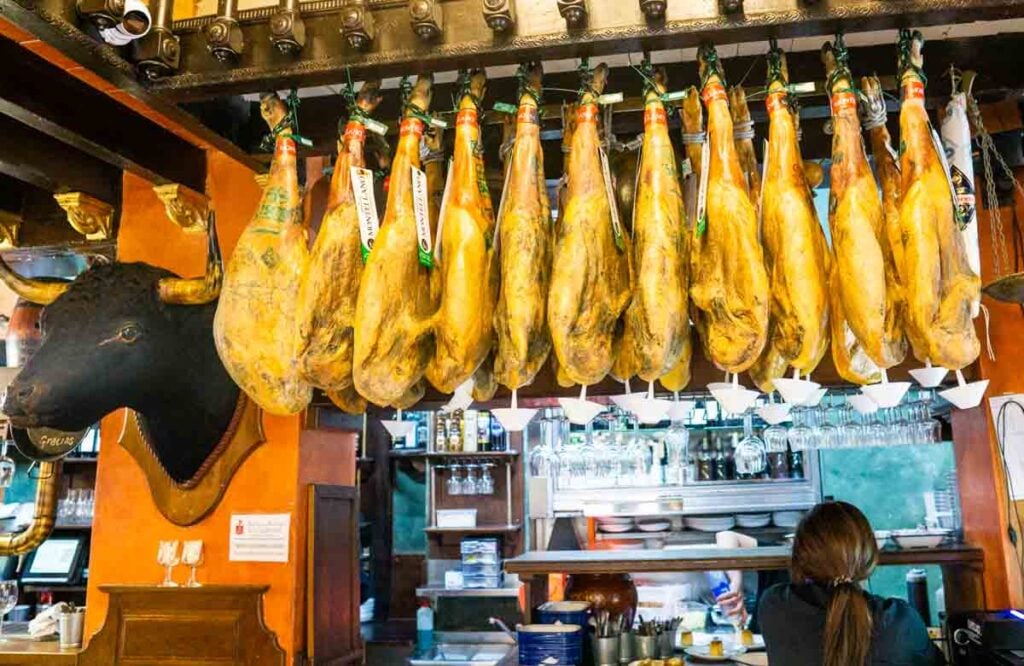
The next couple of hours would take in three restaurants, six dishes, five glasses or wine (or alcohol-free beer in my case) which would ultimately lead to afternoon siesta. When in Rome and all that…
Our first stop was Casa Castañeda, a very traditional bar serving very traditional tapas bar. Above the bar hung several legs of our first course, jamon iberico, which the Spanish will tell you is the finest ham in the world, and I wholeheartedly agree.
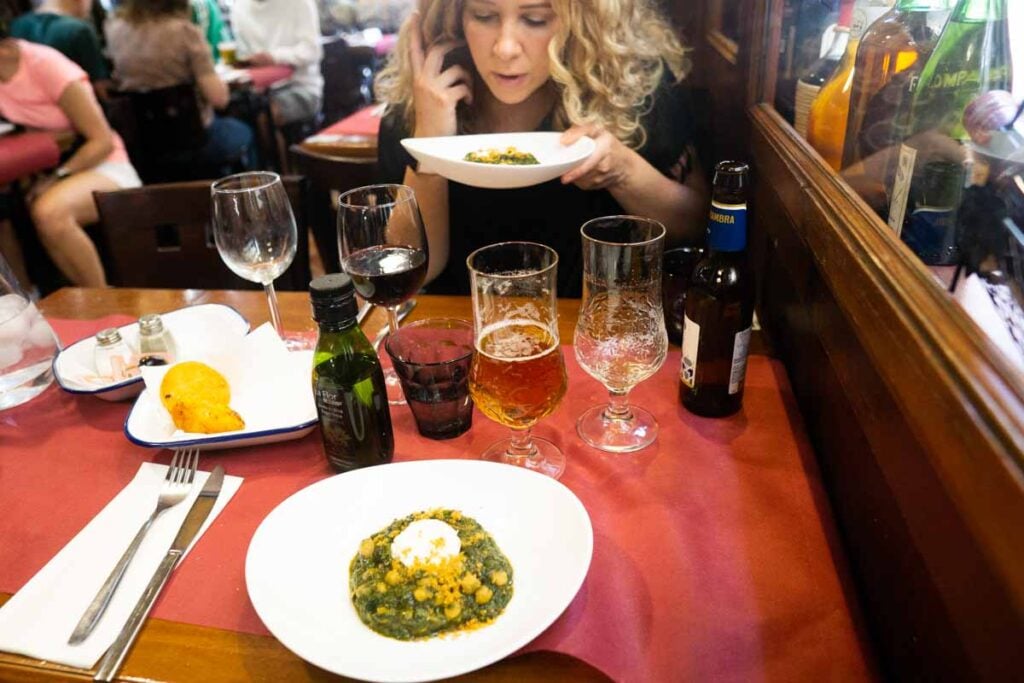
The sweet ham comes from the black iberico pig, and their black hooves mean their legs are referred to as ‘path negra’. Marcel talked us through the intricacies of the grading system for the ham, the different purities of the breed to look out for, and that the very best is jamon iberico de bellota.
These pigs roam in oak forests around Andalusia and across the border into Portugal feeding on a diet of acorns before their meat is cured for a minimum of 36 months.
My wife is not usually a huge fan of cured meats, but rather disappointingly she enjoyed the iberico so much that we had to equally share our portion. I love it jamon iberico. It’s always in my bag on the way home from Spain so the melt in your mouth sweet tasting ham was the perfect intro to our food tour.
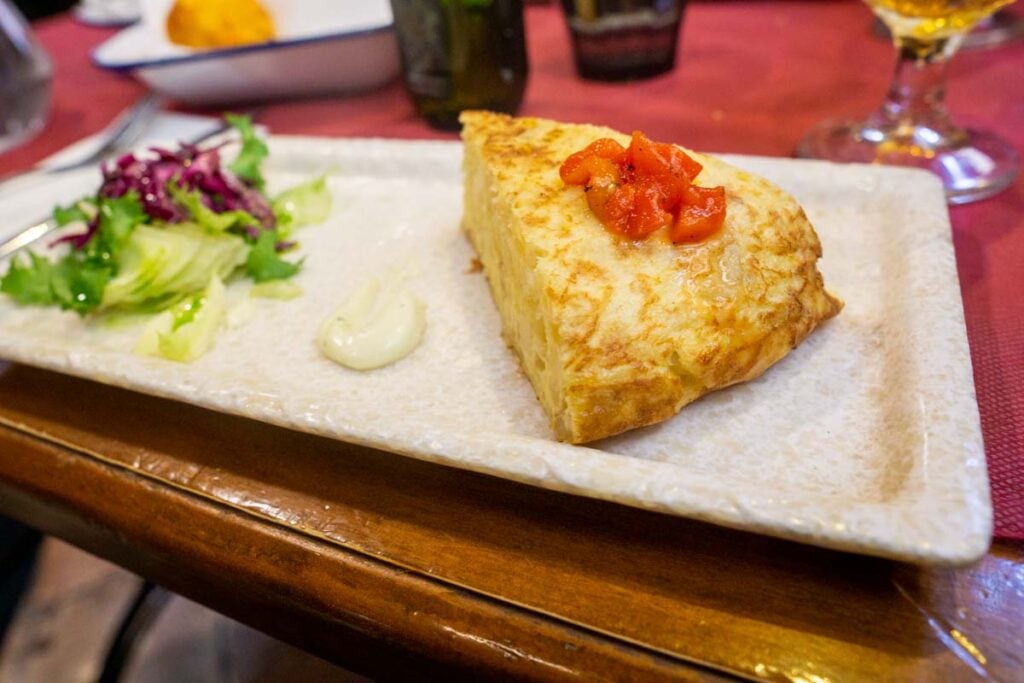
Another traditional dish swiftly followed, tortilla española. My auntie is Barcelona makes the best tortilla in the world, but this slightly runny Spanish omelette would have been a worthy runner up.
Next up was a delicious chickpea and spinach dish, which was spiced with cumin, and displayed the north African influence on Andalusian cuisine.
All the above were offered with a traditional vermut to start with, some cava, and a very nice white wine who’s name I never caught as I was too engrossed in my jamon at the time.
Our next stop was Restaurante Alameda, a modern looking restaurant in the Realejo area of the city and a restauant serving food good enough to get them in the Michelin Guide.
Our stop was brief, only one course this time but one of Granada’s specialities: rabo de toro. In its simplest form, rabo de toro is a slow cooked oxtail stew served in a rich and tasty sauce.

However, in Granada you will find restaurants trying to serve it in new and imaginative ways, and Restaurante Alameda’s solution was in a perfectly round creamy croquette served with a handful or well-cooked chips. Simple but delicious and my favourite dish of the day.
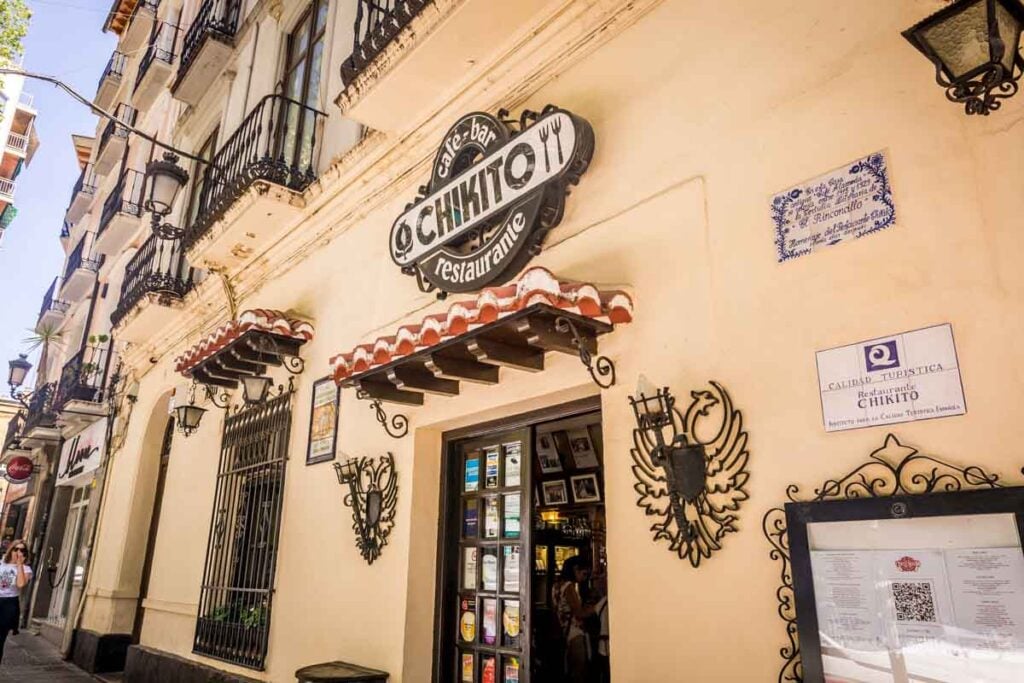
Our final destination was Chikito, a well-loved restaurant visited by many renowned people whose photos adorn the walls of the main restaurant room.
The site where the restaurant now stands was once the meeting point for Spanish poet Federico García Lorca and his group of fellow creators, artists and musicians. A statue of Lorca now sits in the corner of the restaurant and kept up company whilst we ate.
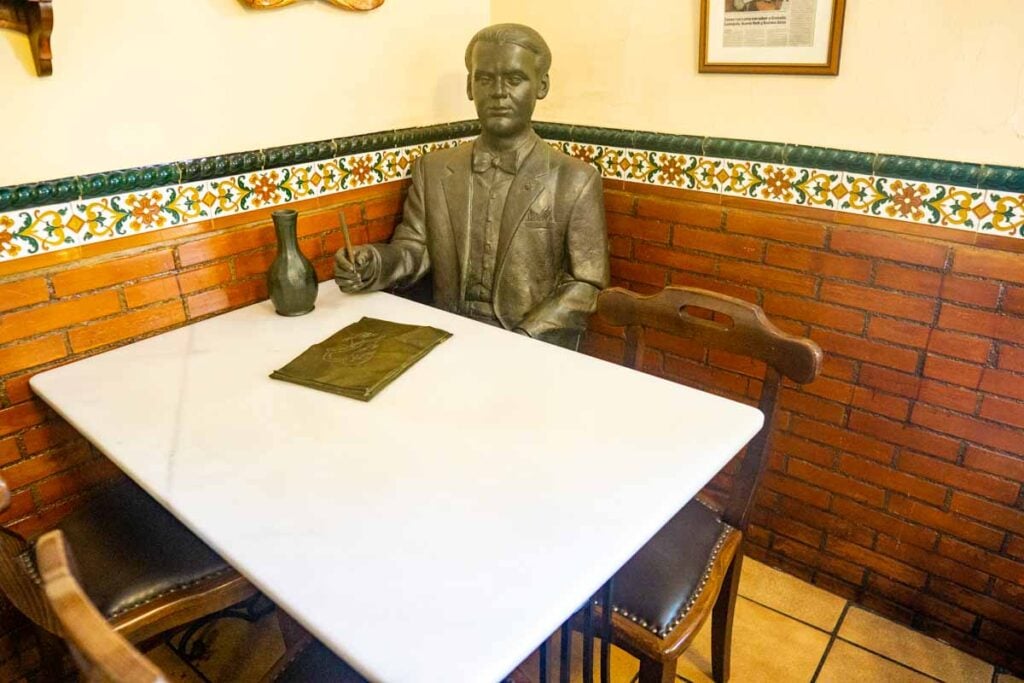
The food was traditional Andalusian fare, but done very well, in a friendly and hospitable setting.
First up was remojón granadino, a salad of shredded salt cod and oranges which you can find in varying forms across the city and perfect food for eating in the Andalusian summer.
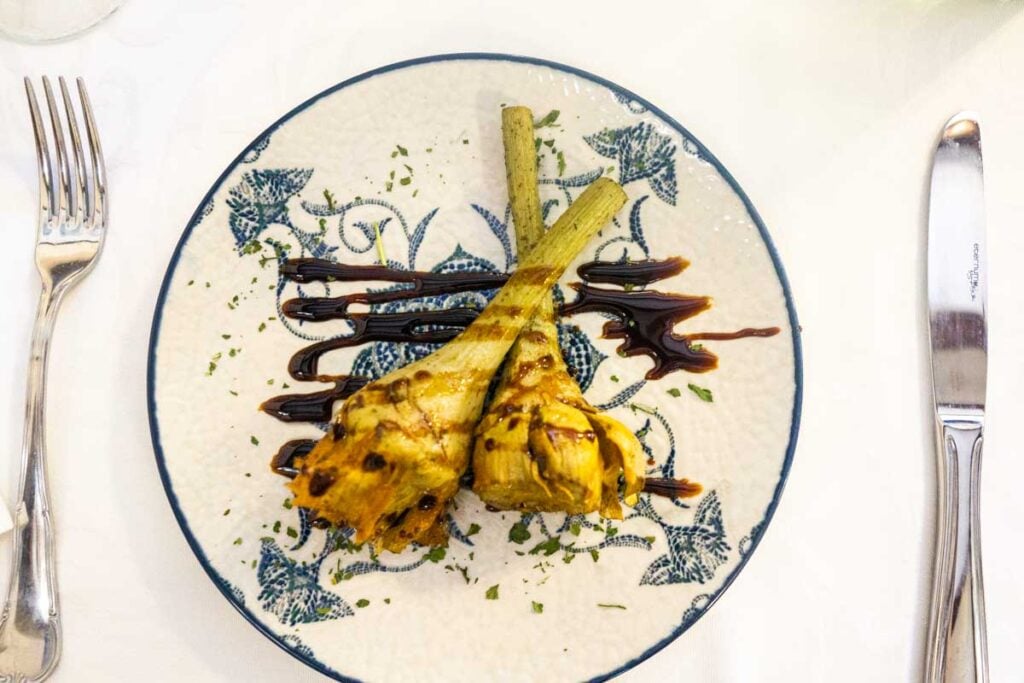
This was followed by a fabulous fried artichoke dish with a sweet cane honey dressing, before our desert arrived, the house special which is a baked treacle taste which completely finished my off.
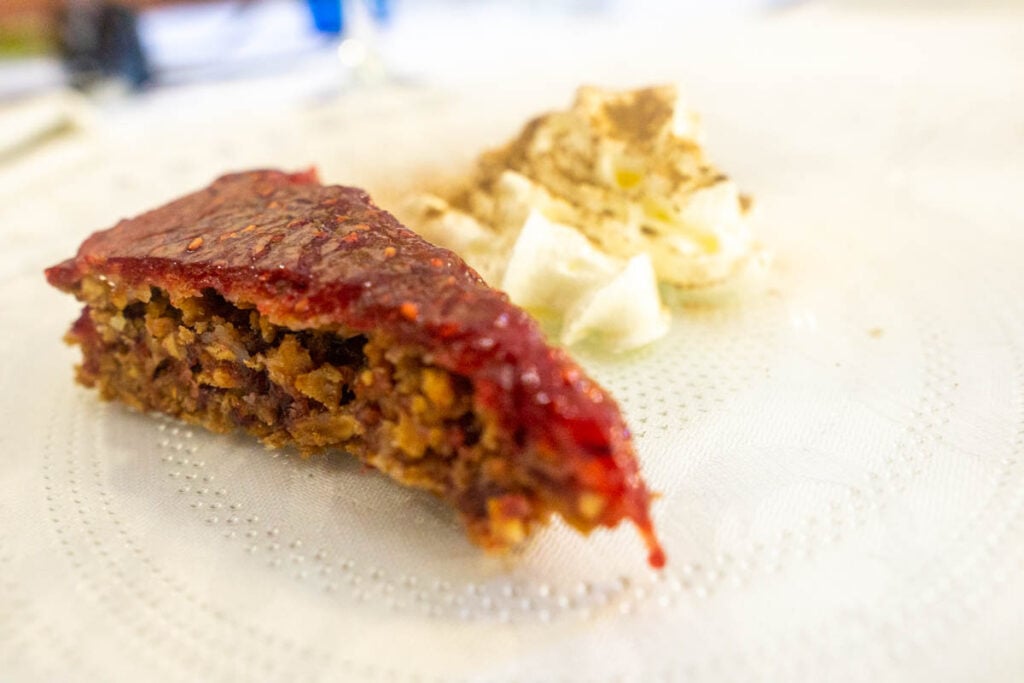
A siesta was needed, so we said goodbye to Marcel, our brilliant food and city guide and headed off to our apartment to sleep of our food tour before heading out for dinner.
The Albaicín
On warm afternoons we found ourselves pulled towards the Albaicín, the Moorish quarter of the city on the hill facing the Alhambra in search of sanctuary.
The Albaicín is a UNESCO world heritage site, and the warren of small streets, back alleys and connecting stepped pathways can keep you on the edge of being lost for a few hours. At the end that meets the old quarter is full of shops and street sellers and feels more like the souks of Marrakech, and like Marrakech it houses some delightful teahouses.
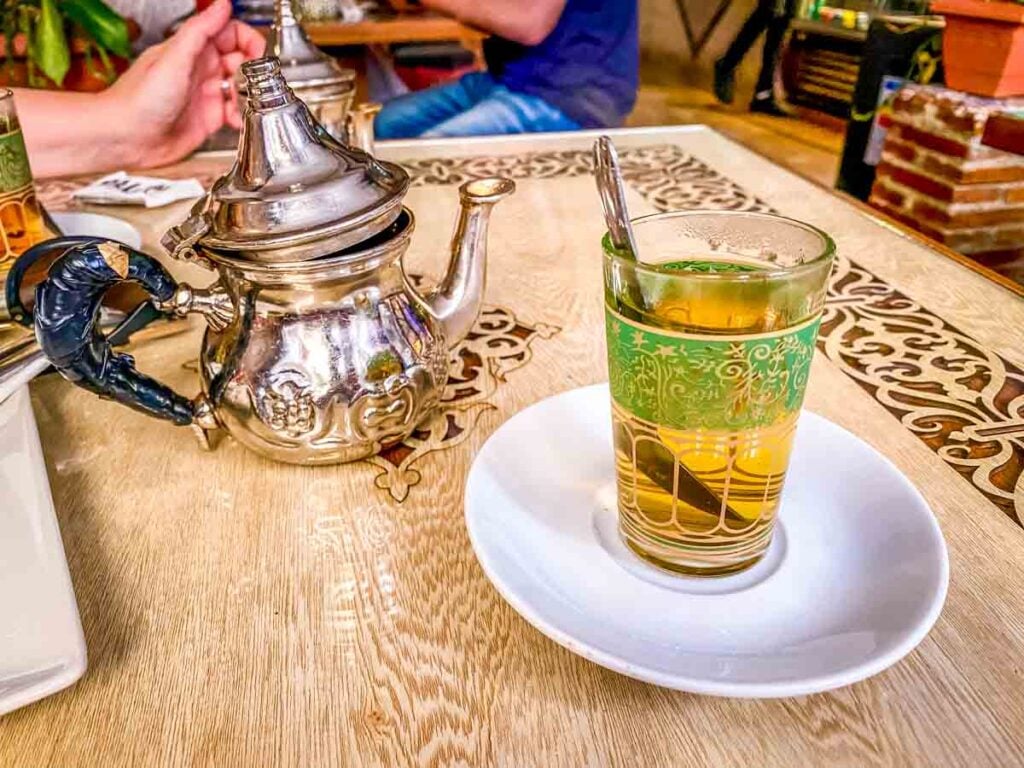
These littles oases are great spots for taking a break and enjoying some Moroccan tea infusions and some sweet pastry treats.
In the evenings we walked, and ate, and walked and ate some more and it is not hard to find good places to eat.
We went blind on a couple of occasions and just stopped at places where the food looked good. A little bit of research took us to two places that promised great food but also great venues.
El Claustro
El Claustro is housed within the AC Palacio de Santa Paula hotel and offers dining in the 16th century convent courtyard.

It’s a beautiful setting for an evening meal, and although it was the most expensive food we had on our Granada trip, it was one of the most memorable meals.
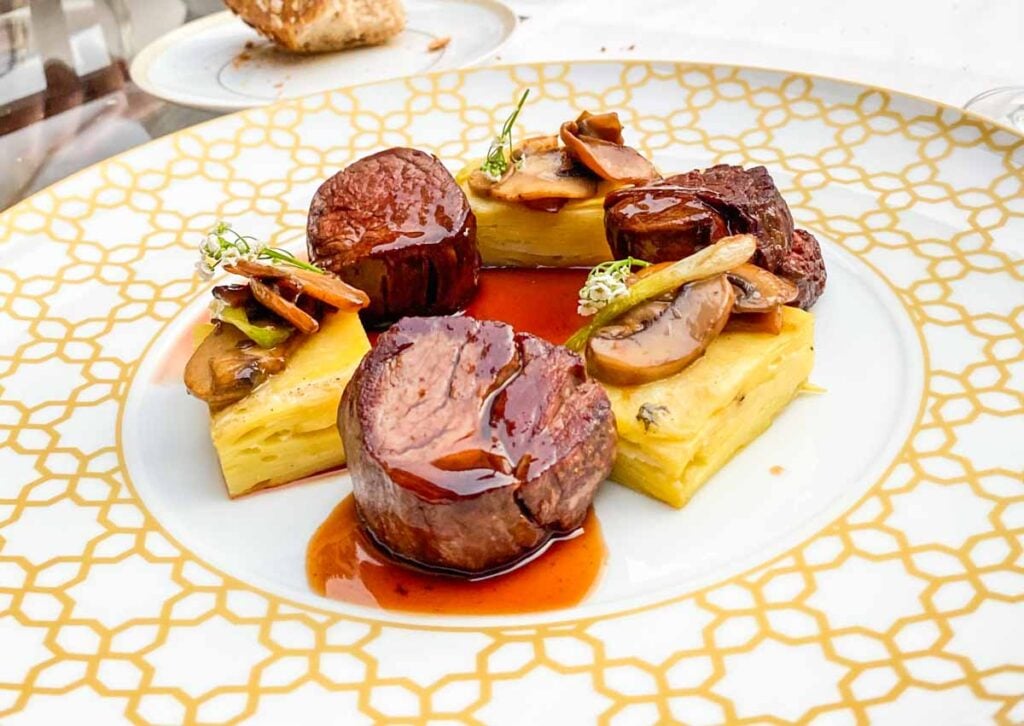
The staff were very attentive, and the food was excellent, typical Andalusian cuisine but done in a modern style.
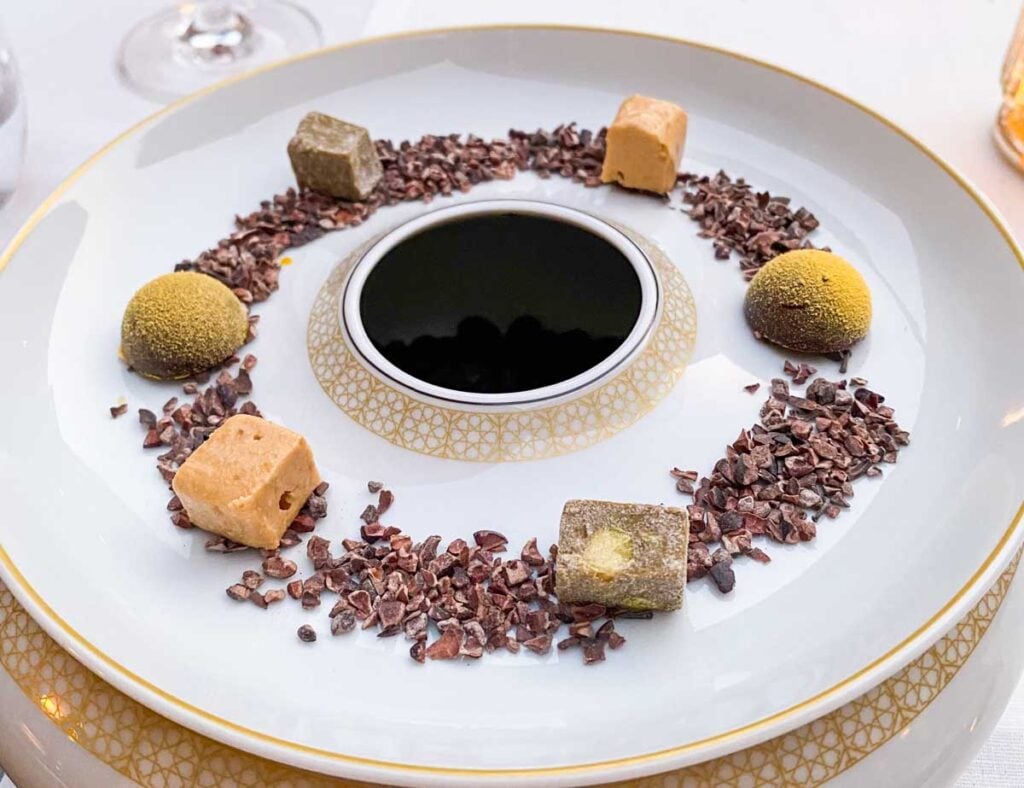
The staff were particularly proud that the verdant olive oil supplier Omed, that they had partnered with at the beginning of that year was named the best olive oil in the world.
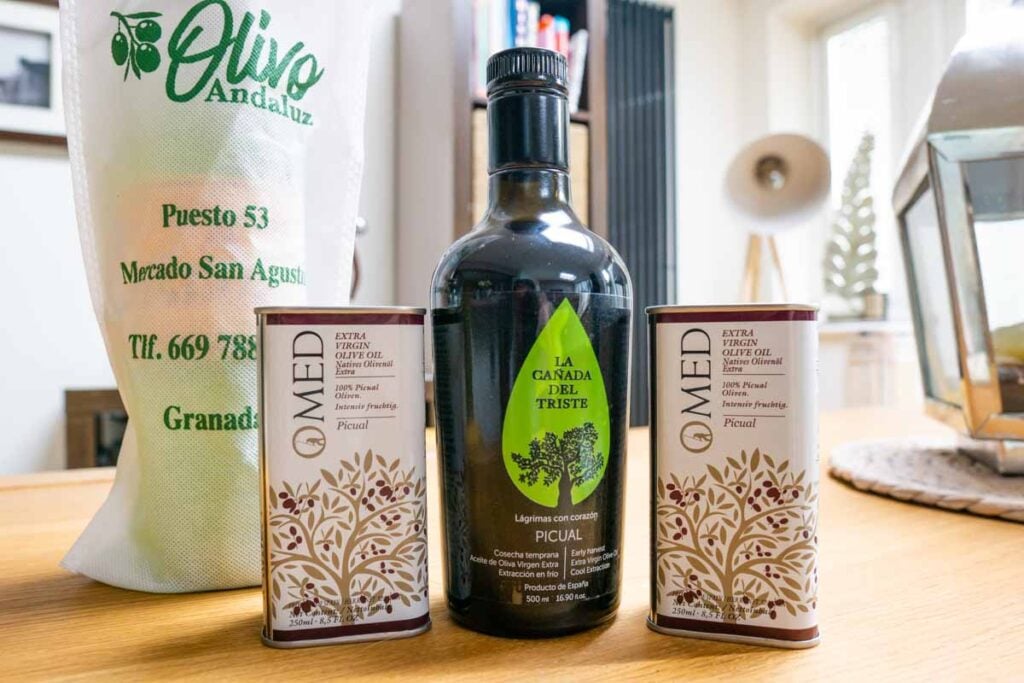
I managed to hunt some down in the Mercado San Augustin before I left so the best olive oil in the world is now in my kitchen cupboard.
A restaurant with a view
Our final evening needed a table with a view. There are lots of great spots for watching the Alhambra light up at sunset. The Mirador de San Nicolas is most popular (the grounds of the Mosque next door are even better), and a walk or taxi up to San Miguel Alto in Sacromonte will give you views across the whole city.
However, all these places can be busy, so a better option is to book a table at one of the Albaicín restaurants with a view of the Alhambra.
We went for Restaurant Las Tomassas which is in an excellent spot in front of the Mirador de San Nicolas and has a great terrace space as well as indoor dining tables all of which have brilliant view of the Alhambra.
The food was excellent – a special mention to Catalan style ‘black fideua’ or short noodles and baby squids – and the cod I had for my main was as good as the view and this was what we were here for.
The Alhambra is a beautiful building, and watching it change colours with the setting sun whilst eating some fabulous Andalusian food is a must do if you are passing this way.


